Potřebujeme váš souhlas k využití jednotlivých dat, aby se vám mimo jiné mohly ukazovat informace týkající se vašich zájmů. Souhlas udělíte kliknutím na tlačítko „OK“.
ASTM D4776/D4776M-10
Standard Test Method for Adhesion of Tire Cords and Other Reinforcing Cords to Rubber Compounds by H-Test Procedure
Automaticky přeložený název:
Standardní zkušební metoda k lepení do pneumatik a další Posílení šňůry gumárenských směsí od H-Zkušební postup
NORMA vydána dne 1.1.2010
Informace o normě:
Označení normy: ASTM D4776/D4776M-10
Poznámka: NEPLATNÁ
Datum vydání normy: 1.1.2010
Kód zboží: NS-28529
Počet stran: 5
Přibližná hmotnost: 15 g (0.03 liber)
Země: Americká technická norma
Kategorie: Technické normy ASTM
Kategorie - podobné normy:
Anotace textu normy ASTM D4776/D4776M-10 :
Keywords:
adhesion, reinforcements (textiles), rubber, tire cord, Acceptance criteria/testing--textile fabrics/fibers, Heating tests--rubber, Heating tests--textile materials/applications, Holland cloth, H-test adhesion, Rubber adhesion, Rubber compounding materials, Skim stock, Tensile properties/testing--rubber/related materials, Tire cords and tire cord fabrics, ICS Number Code 83.160.01 (Tyres in general)
Doplňující informace
| Significance and Use | ||||||||||||
|
Test Method D4776 for the determination of the H-test adhesion of reinforcing cords to rubber compounds may be used for the acceptance testing of commercial shipments of reinforcing cords but caution is advised since information about between-laboratory precision is incomplete. Comparative tests as directed in 5.1.1 may be advisable. In cases of dispute arising from the differences in reported test results when using Test Method D4776 for acceptance testing of commercial shipments, the purchaser and the supplier should conduct comparative tests to determine if there is statistical bias between their laboratories. Competent statistical assistance is recommended for the investigation of bias. As a minimum, the two parties should take a group of test specimens which are as homogeneous as possible and which are from a lot of material of the type in question. The test specimens should then be randomly assigned in equal numbers to each laboratory for testing. The average results from the two laboratories should be compared using Student's t-test for unpaired data and an acceptable probability level chosen by the two parties before testing begins. If a bias is found, either its cause must be found and corrected or the purchaser and the supplier must agree to interpret future test results in light of the known bias. This test method is used to measure the force required to extract the cord from a rubber compound test block. This test method is designed to test the adhesion of textiles that are bonded to rubber compounds. Variables that may contribute to differences in results of this test method include adhesive type, adhesive application procedure, adhesive cure, fiber type, construction of cords, rubber type, rubber cure, and rubber thickness. The deleterious effect of ozone in combination with atmospheric moisture on the ability of adhesives to bond with rubber requires assiduous protection of cords prior to embedment. The expected range of values which characterize acceptable adhesion can be determined in any cord-rubber combination with experience. For this reason, the purchaser normally establishes a minimum level of adhesion to be obtained by the supplier in either the supplier's laboratory or the purchaser's laboratory using either the supplier's standard rubber compound or the purchaser's rubber compound. Another procedure for testing adhesion of cords to rubber compounds is Test Methods D4393 . This procedure has been used extensively in the trade for acceptance testing. Results obtained by this method cannot be used interchangeably since there is no overall correlation between them. |
||||||||||||
| 1. Scope | ||||||||||||
|
1.1 This test method covers the measurement of adhesion of reinforcing cords that are bonded to rubber compounds. This test method is applicable to textile cord structures from both natural and manmade fibers, other than steel. For adhesion testing of steel tire cords, refer to Test Method D2229. 1.2 This test method is primarily used to evaluate tire cords, using a suitable tire cord adhesive and a suitable rubber compound. This test method is also used to evaluate (1) tire cord adhesives, and (2) the process of adhesive reaction on the cord using one consistent form of tire cord and one consistent rubber compound. This test method may be used to evaluate cords in industrial hose and belting products and other cord reinforced rubber products. 1.3 The values stated in either SI units or inch-pound units are to be regarded separately as standard. The values stated in each system may not be exact equivalents; therefore, each system shall be used independently of the other. Combining values from the two systems may result in non-conformance with the standard. 1.4 This standard does not purport to address all of the safety concerns, if any, associated with its use. It is the responsibility of the user of this standard to establish appropriate safety and health practices and determine the applicability of regulatory limitations prior to use. |
||||||||||||
| 2. Referenced Documents | ||||||||||||
|
Podobné normy:
Historická
15.5.2014
Historická
1.1.2011
Historická
1.12.2010
Historická
1.6.2014
Historická
1.5.2012
Historická
1.6.2014
Doporučujeme:
Aktualizace zákonů
Chcete mít jistotu o platnosti užívaných předpisů?
Nabízíme Vám řešení, abyste mohli používat stále platné (aktuální) legislativní předpisy.
Chcete vědět více informací? Podívejte se na tuto stránku.


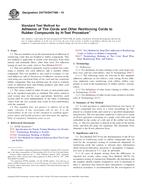
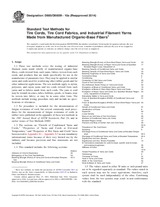 ASTM D885/D885M-10a(..
ASTM D885/D885M-10a(..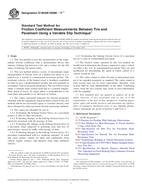 ASTM E1859/E1859M-11..
ASTM E1859/E1859M-11..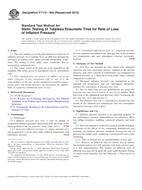 ASTM F1112-06a(2010)..
ASTM F1112-06a(2010)..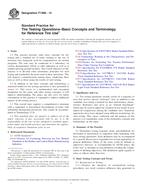 ASTM F1806-14
ASTM F1806-14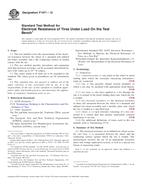 ASTM F1971-12
ASTM F1971-12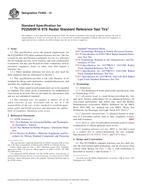 ASTM F2493-14
ASTM F2493-14
 Cookies
Cookies
